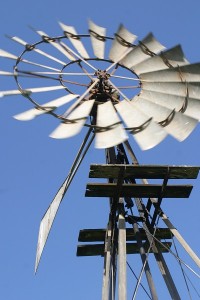 CONTINUING dry conditions across New South Wales will have a major negative impact on the state’s cropping and livestock sectors this year, NSW Department of Primary Industries’s leader on climate applications and digital agriculture Dr Anthony Clark said.
CONTINUING dry conditions across New South Wales will have a major negative impact on the state’s cropping and livestock sectors this year, NSW Department of Primary Industries’s leader on climate applications and digital agriculture Dr Anthony Clark said.
Releasing the department’s latest State Seasonal Update, Dr Clark said NSW is at a higher state of alert than in February.
“If dry conditions persist throughout the remainder of the critical autumn window, there will be a major negative impact on cropping and livestock sector production for 2018,” he said.
“During March temperatures were warmer than average across the whole state with most of inland NSW experiencing average daytime temperatures of over 30 °C, while in eastern NSW temperatures ranged from 18-30 °C.”
“Lack of rainfall and warm temperatures across much of the state have put pressure on pasture growth and reduced stored soil moisture,” he said.
“In March and early April, rainfall and soil moisture levels across inland NSW were generally insufficient to allow the sowing and establishment of late maturing dual purpose winter grazing crops.”
This is expected to put increased pressure on pastures over late autumn and winter, unless reasonable rainfall is received soon to get grazing crops sown.
The department said farmers throughout the State are weighing decisions on whether to sow winter crops and how to manage livestock as dry conditions have continued across New South Wales throughout March.
The latest State Seasonal Update has shown only areas of the north and east of the state received reasonable rainfall during March as more areas of the Hunter, Central West, Central Tablelands and Far West tipped into Drought.
The update is linked to the DPI’s recently released Enhanced Drought Indicator System, and includes a Combined Drought Indicator which categorises areas of the state to give farmers earlier warning as conditions deteriorate or improve.
Dr Clark said dry conditions had left pasture base in very poor condition across the affected areas.
“During March rainfall ranged from 5 mm to 100 mm across most of the state.
“Large areas of the Western, Central West, Riverina and Murray regions received less than 10 mm,” Dr Clark said.
“The southern half of the North Coast and north east of the Hunter regions received from 200 mm to above 300 mm in some areas.
“Despite good falls of rain in parts of the north east Hunter, this area remains in Drought Watch, while the western area that missed the high rainfall remains in Drought,” he said.
Dr Clark said with the expansion of the area under Drought Watch in March, and the main sowing time approaching for winter crops, DPI is continuing to monitor agronomic indicators like stored soil moisture very closely.
“The Drought Direction Index to 31 March shows a drier trend across most of inland and southern NSW, while the majority of the North Coast, Hunter and Greater Sydney regions are currently showing a wetter trend.”
The Bureau of Meteorology’s rainfall outlook for April to June indicates that there is a near-equal chance of drier or wetter than normal conditions across most of NSW.
There is an increased chance of wetter than normal conditions across areas of the south east of the state, including the south coast, southern highlands, the Monaro and the alpine areas.
Primary producers are encouraged to visit www.droughthub.nsw.gov.au for information on a range of services and support available to prepare for and manage drought conditions.
Source: NSW DPI.

HAVE YOUR SAY